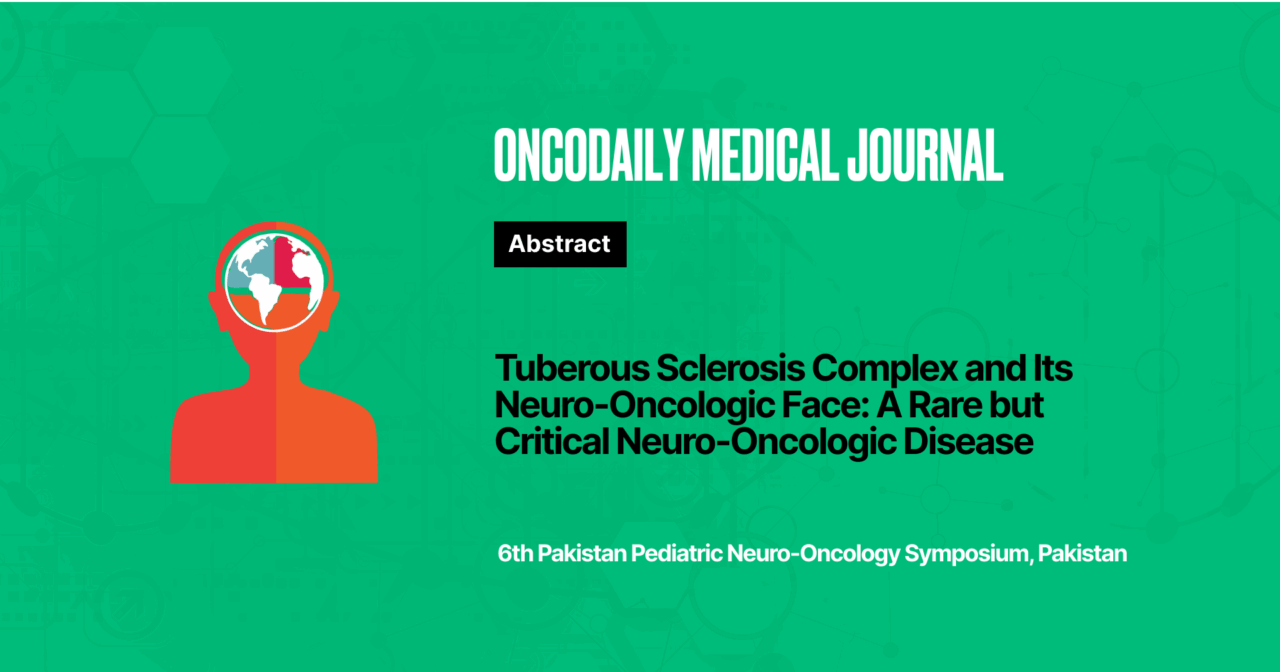Tuberous Sclerosis Complex and Its Neuro-Oncologic Face: A Rare but Critical Neuro-Oncologic Disease
Abstract
Introduction: Tuberous Sclerosis Complex (TSC) is a rare autosomal dominant multisystem genetic disorder that is caused by dysregulated mTOR-mediated cell growth, leading to benign hamartomatous lesions and functional dysregulation in multiple organs like the brain, kidney, skin, lungs, and heart. Cortical tubers, subependymal nodules (SENs), and subependymal giant cell astrocytomas (SEGAs) are the neurological hallmarks of TSC, leading to seizures, epilepsy, intellectual disability, and autism. Routine MRI and surveillance by a multidisciplinary medical team in patients with TSC can lead to early diagnosis of SEGA, decreasing its morbidity.
In countries such as Pakistan, significant diagnostic delays are present due to limited resources of MRI and genetic testing, leading to a delay in the detection of SEGA in patients with TSC.
Methodology: Databases such as PubMed and Cochrane were used. The literature was reviewed thematically.
Results: Multiple organs develop hamartomas in TSC, leading to phenotypic variability, which makes diagnosis difficult. SEGAs occur in approximately 10-20% individuals near the Foramen of Monro, can obstruct the CerebroSpinal fluid flow with the smallest growth, which can result in life-threatening hydrocephalus and elevated intracranial pressure. Although it is uncommon, a few isolated case reports have documented malignant transformation of SEGA. Individuals with TSC2 are more likely to develop SEGAs, have neuropsychiatric symptoms, and have higher tuber-to-brain proportions. Current management guidelines emphasize early screening for electroencephalographic abnormalities and genetic testing. Long-term results could be improved by treatment on identifying these abnormalities, but more research is needed to support this claim. When surgical removal is not an option, MTOR inhibitors are utilized; however, these have a stunting effect on pediatric patients.
Conclusion: Due to limited imaging, poor clinician awareness, and fragmented multidisciplinary services, TSC becomes a life-threatening condition. Resource allocation, professional training, and research funding, along with a standardized MRI screening protocol, should be implemented.
Conflict of Interest: None
Funding: None
Disclosure Statement: None
License: This article is published under the terms of the Creative Commons Attribution 4.0 International License (CC BY 4.0).
© Mushaim Gillani, 2025. This license permits unrestricted use, distribution, and reproduction in any medium, provided the original author and source are credited.





